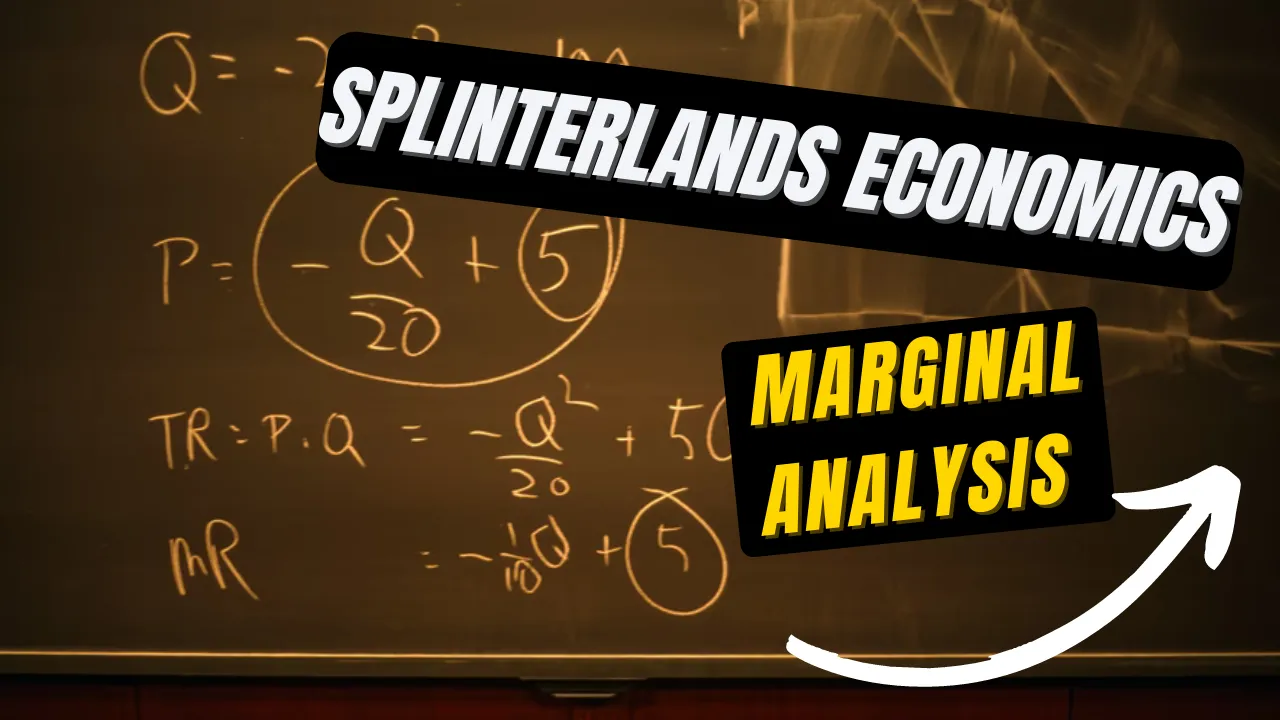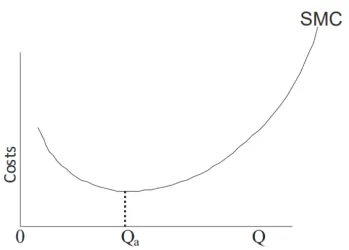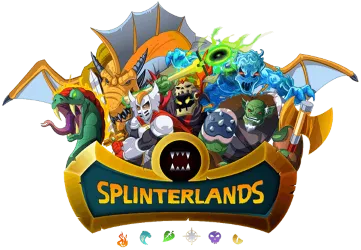Hello everyone! We are back again today with another edition of Splinterland Economics - a series in which we introduce a basic economic concept and then apply it to Splinterlands. If this is your first time reading, just to tell you a little bit about myself: my day job is in an unrelated area but I consider myself a little bit of economics nerd - I read a little (or maybe way, way) more news than I should, double majored in econ, and am obsessed with optimization. I love the way Splinterlands is equal parts card game and resource allocation game. My goal with these articles is to share a little bit of what I know with you all.

Today's topic is the key to optimization, both in Splinterlands and outside of it. In my very first economics class ever, my teacher told us that his hope was if we were going to remember anything about the class, that it would be the marginal cost curve. In fact, if you take a look at the thumbnail I have been using for this series all along, the arrow on the bottom right closely resembles a marginal cost curve. I would have put the Nike swoosh there, but I did't want to go and give anyone out there the wrong impression. Colonel Rankin would be happy to know that I've remembered a whole lot more than that Nike swoosh - thanks to his class, I found my passion for the subject. So this column and really this whole series probably wouldn't have been written at all without him, thank you Colonel!
Our subject today is not only marginal cost, but marginal analysis in general. Apologies to anyone who clicked here and expected a stock market article - while I do participate in the markets, trading on margin is not my area of expertise. Anyways, onwards to our discussion!

What is the margin, or marginal analysis?
Marginal analysis deals with how much we gain by doing "a little bit more" of something. For anyone who has taken and/or still remembers calculus, it is very similar to the concept of a derivative. Marginal analysis specifically looks at the cost of doing that little bit more ("marginal cost"), and compares it to the benefit of doing so ("marginal benefit", or "marginal revenue"). Is the cost lower than the benefit? Then you'll profit some more by doing more of that activity. Is the cost higher than the benefit? Well, maybe you shouldn't do any more of that, or even do a little bit less.

This is an example of a typical marginal cost curve (pulled from Wikipedia). You tend to see initially decreasing costs from economies of scale or higher efficiencies, and then increasing costs as you become constrained by fixed factors of production and otherwise diminishing rates of return. Our optimization point is when marginal cost is exactly equal to marginal revenue (MR = MC). Obviously, in many cases it is difficult to exactly hit that point, but in the real world, our goal is to get as close as possible to it.
How do we apply it to Splinterlands?

Splinterlands is filled with activities where we can make some sort of profit, and need to decide how much of something to do. How far should to try to move up the ladder leagues to obtain those ranked win DEC gains? How much time should you devote to sniping cards in the market? How often should you be taking your valuable energy and sanity to play in tournaments, or write out blog posts? While I can't tell you the exact answer to any of those questions, I CAN tell you that if you take the time to look at your costs - your time, DEC, or cards - of doing a little bit more of it, and compare them to your benefits - your blog revenue, ranked play, or rental earnings, then you'll be able to figure out that answer for yourself.
As a motivating example, let's look at the decision of whether or not to rent more cards in order to move up a league and earn more DEC from ranked play earnings. For anyone who has been reading my articles for a very long time, this subject may sound a little familiar, and the key is marginal analysis. By comparing the marginal cost of an additional league (the extra rentals for improved cards and CP) with the marginal revenue (the additional DEC and chests we earn by doing so), it is relatively easy to determine whether or not we'll make a greater profit by moving up a league.
When looking at your costs (and benefits!), do try your best to take all of them into account, explicit and otherwise. Remember that spending your time and energy on things has an opportunity cost, so try to put a value on your efforts. On the flip side, if you have fun and enjoy doing particular things (e.g., playing competitively at a high level, interacting with other people, etc.), the benefits may be higher than they first appear. Taking all of this into account will ultimately be to your benefit.
Why should we care?

If your goal is to increase the value of your Splinterlands account, or the value or something outside of the game, as quickly as possible, then marginal analysis will help you to do that. By using marginal analysis to examine all of your activities, you'll be able to identify the things that you should be doing more of, and the things that you can do a little less of or maybe even just drop completely.
It is entirely too easy in Splinterlands and in life to look at something we're doing, figure that we are making a net gain off of it, and leaving it at that. Sure, maybe your bank account or DEC balance is increasing, but is it increasing as quickly as it could be? It is important to remember that in addition to WHAT we are doing, HOW MUCH of it we are doing can matter just as much. Bigger is not always better, sometimes less is more - but you'll never know for sure until you take the time to look closely at it!
Thank you so much for reading all the way to the end. Interested in seeing some more of my writing in the future? Be sure to give me a follow! In the meantime, if you'd like to see some of my recent posts:
Rolling in the Deep - Using Deeplurker In Battle! - This week's battle challenge, featuring Deeplurker!
Splinterlands Economics: Compound Interest - A introduction to compound interest, and how it can help you out in Splinterlands.
Splinterlands Economics: Credibility - An introduction to Credibility, and insights it gives us into Splinterlands.
Thinking about giving Splinterlands a try but haven't signed up yet? Feel free to use my referral link: https://splinterlands.com?ref=bteim, and be sure to reach out to me if you have any questions!